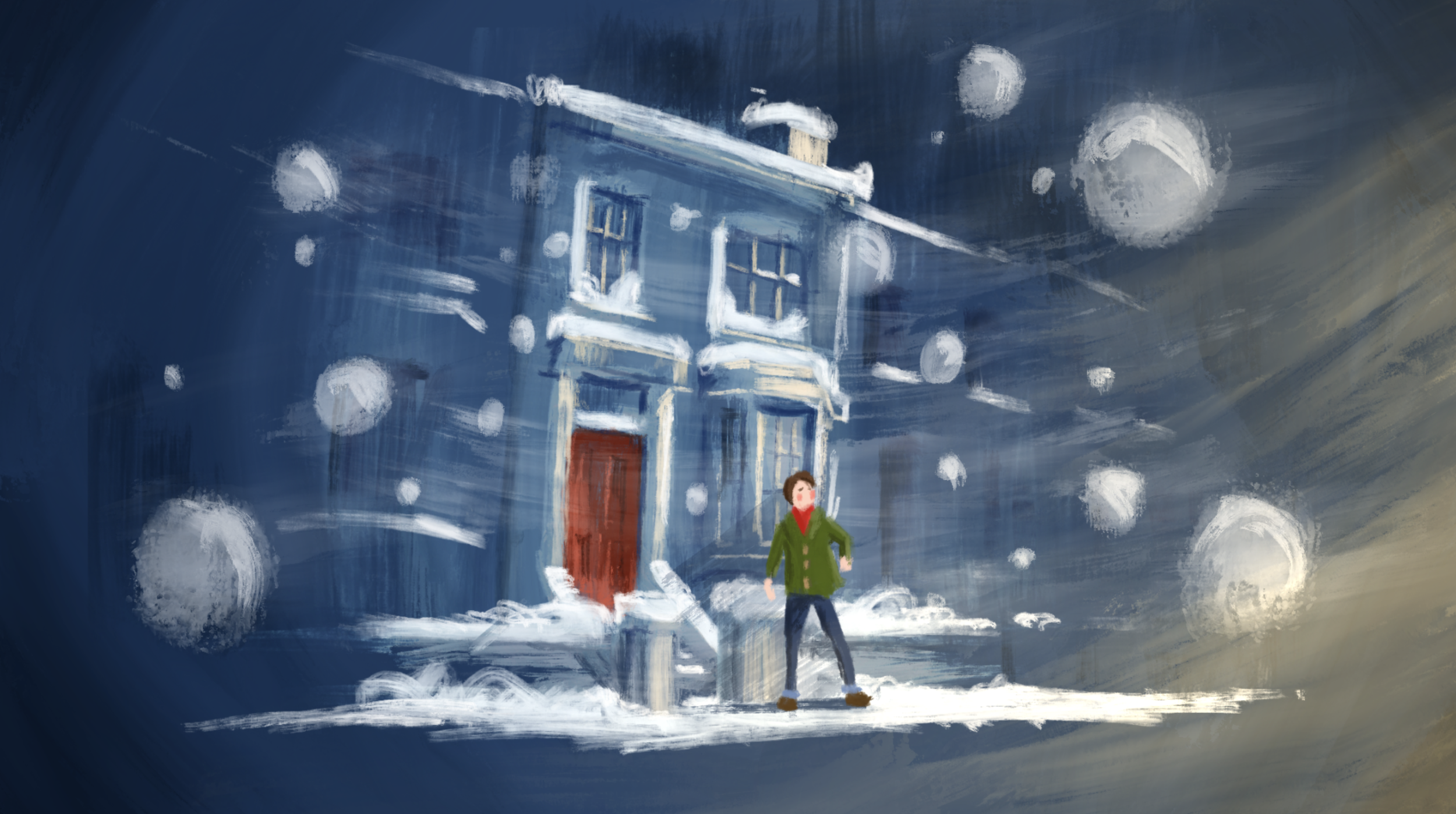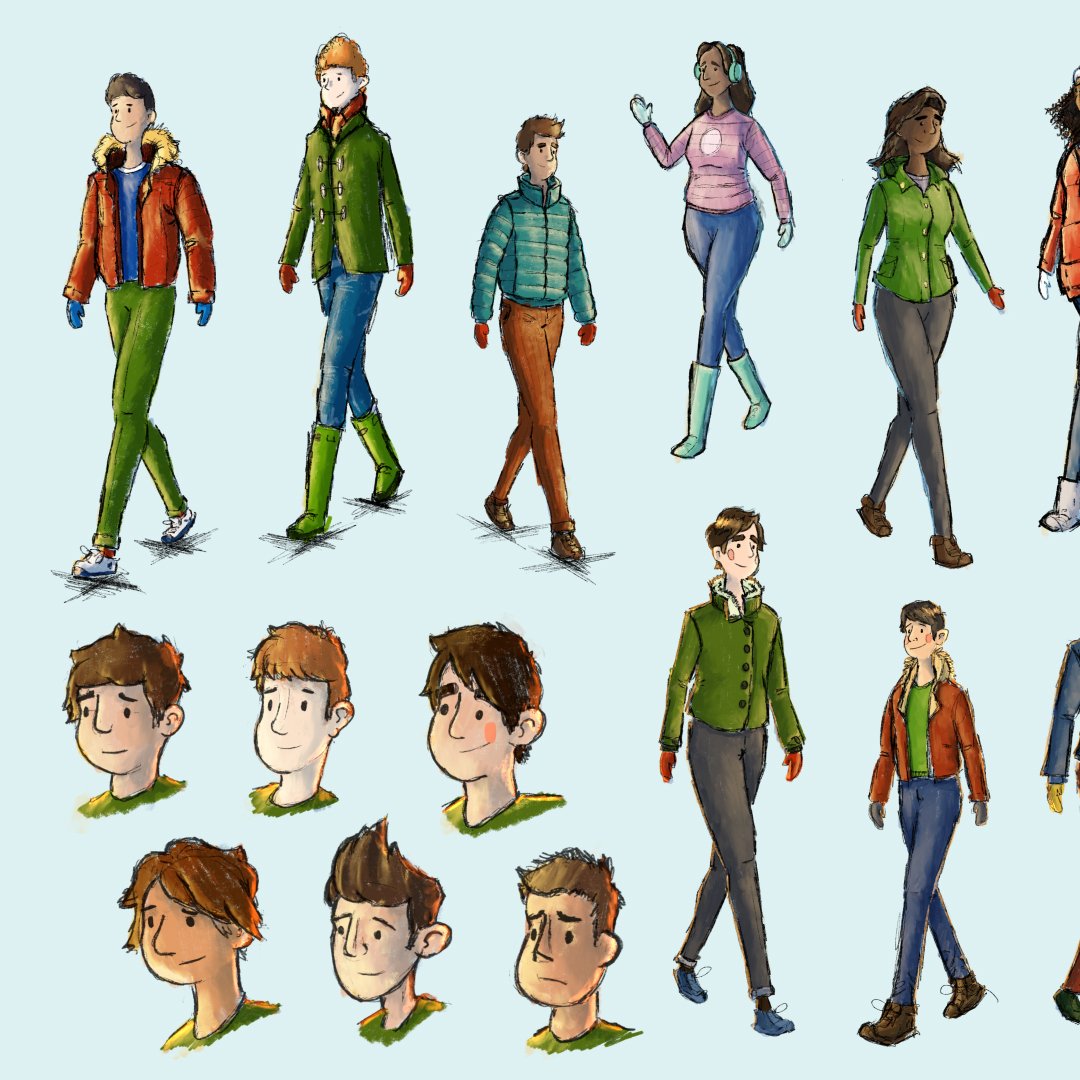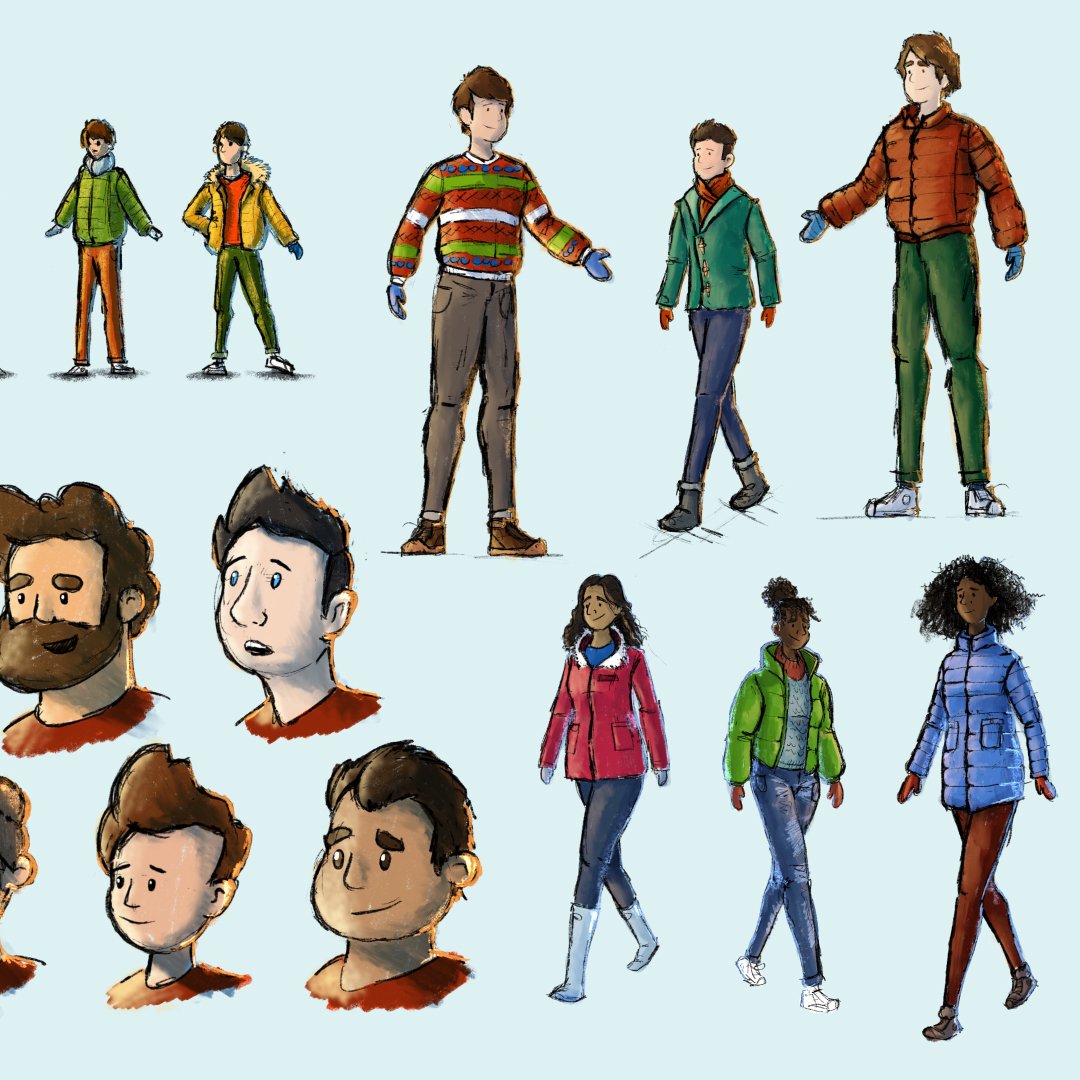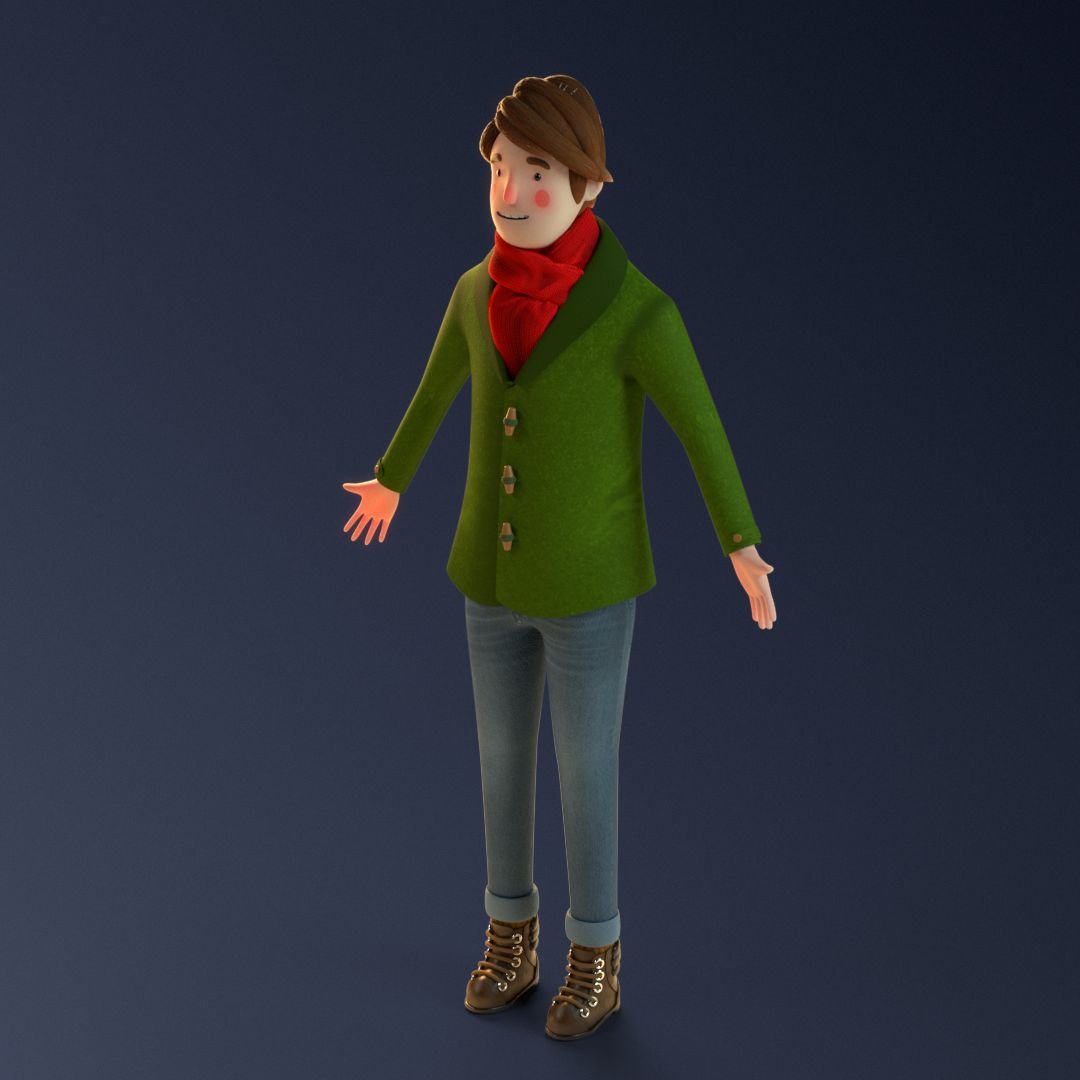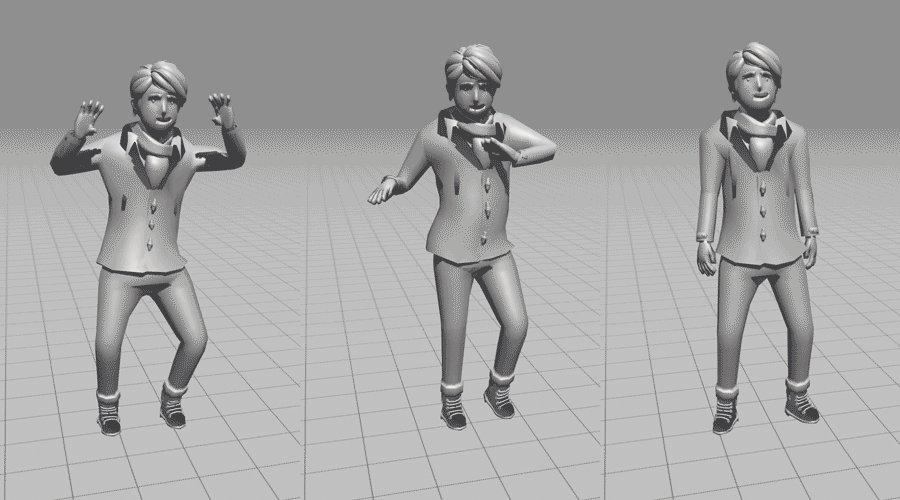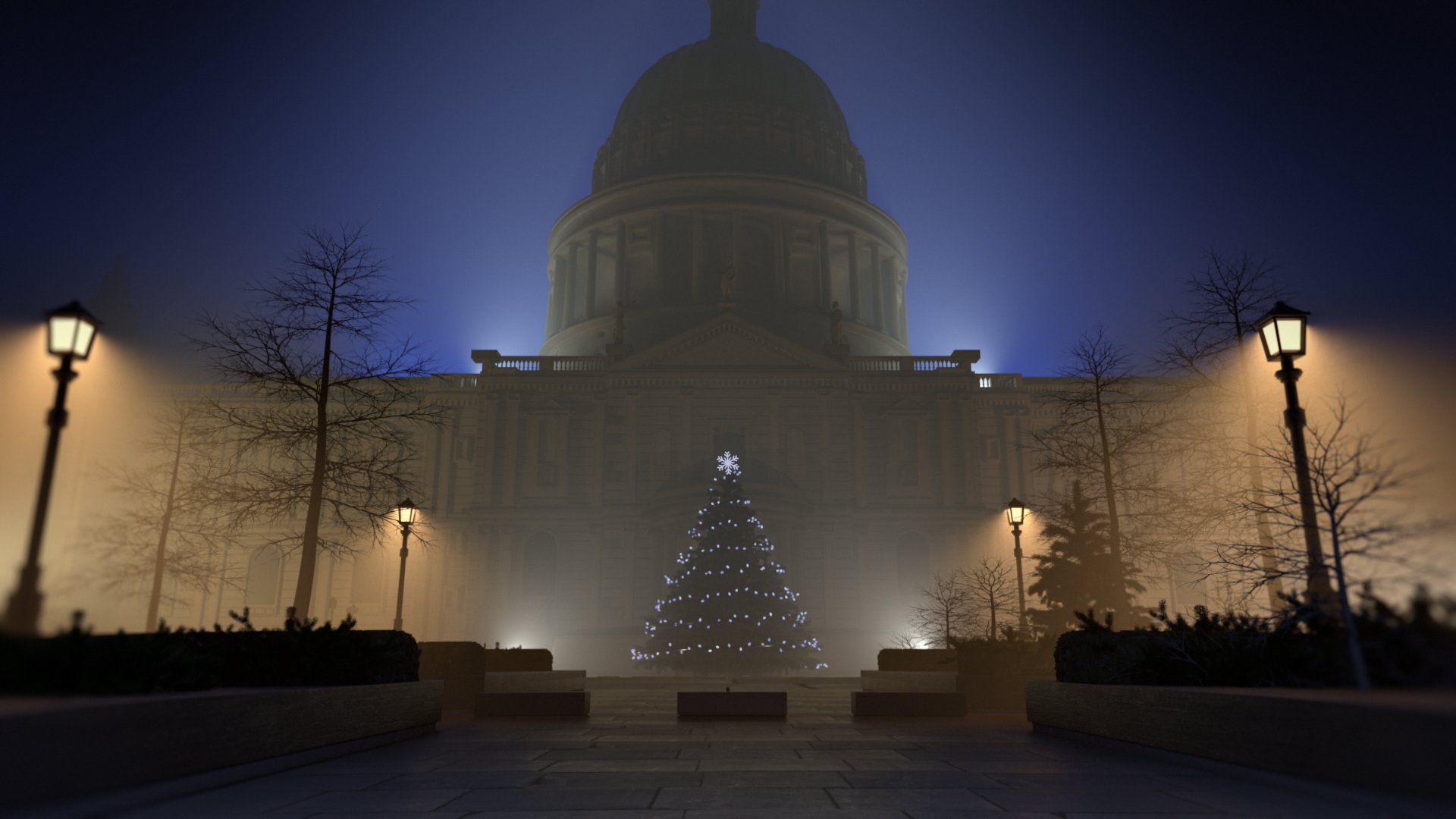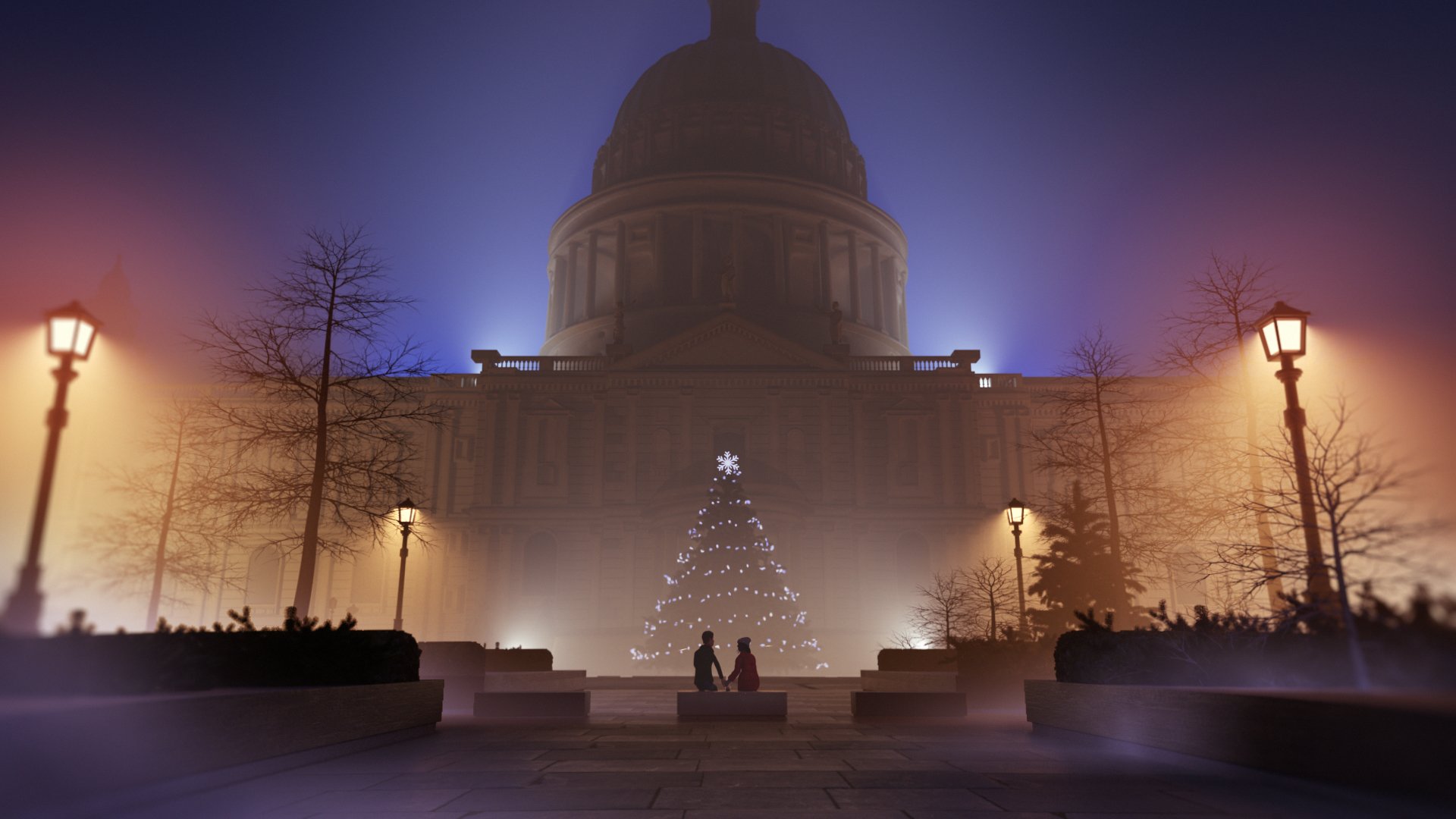Some facts about Chicken Fruit:
Our studio is run by two northerners (one from Yorkshire, one from Greater Manchester). Both of us have been based in London since 2013/2014. We feel fairly established down here, but we still have that touristy spark of amazement if we think about London too hard.
Our studio is also currently the spare room of our flat, and right now there is a plague very much active in the UK, so we don’t do much in the way of “getting out and about”. Because of this, we’re big believers in transforming our space with Seasonal Guff to provide enrichment within the enclosure. Therefore, Christmas – the prime season of Seasonal Guff – is one of our favourites.
So, when musician Ed Blunt approached us about making a music video about Christmassy London, we jumped at the chance.
The first and most important step in the creative process was obviously to get the Christmas box down (in mid-October) and decorate the studio. Just to get in the mood, you know.
We’ve since added a Christmas tree where the chair is, because CHRISTMAS
The second step (for our director Jonny) was to pack his razor away and declare that he was going to grow a production beard, like some kind of kindly animation Santa.
3 days B.B. – Before Beard
The third step was actually starting work on the video. We began production in mid-October, and since The Dome of St Paul’s is a Christmas song, ideally it needed to be finished by mid/late November in time for the song to be released. This left quite a short timeframe of ~6 weeks.
With this restriction, we worked with Ed to come up with a few different achievable story concepts based around the theme of someone remembering a day spent in snowy London. We played with the idea of the main character walking through memories made from snow sculptures, or the idea of scenes emerging through foggy streets like holograms or projections.
Eventually, we settled on the idea of the memories being their own sequence, evoked through a scene in a snow globe. This meant we could experiment with two different animation styles – a classic 3D render for the present-day, and a more fluid, hand-painted style for the memories.
Style frame concept for the bus
Style frame concept for the winter street
After we’d decided on a style, we needed to nail the characters. For the main character, Ed’s guidance was “I don’t want him to look like me!” So, armed with the only restrictions of (a) not blond and (b) no glasses, we got to work.
Since one of the main goals of our studio is to be inclusive! and diverse! and overall a force for good!, we’re very conscious that we are two pasty, pasty white people. We’re also conscious that, if we tried to tell stories from the perspective of characters who are not white, even though we’d have the best of intentions, without significant research and input from others, there’s a chance that we’d get it very wrong. (We’re in very early stages of developing a project with a writer/director of colour which we hope to be able to dive into properly next year, but that’s a story for a different blog post.)
So due to our time restrictions, we decided that for the main character, we’d Write What We Know, and made him a pale middle-class white boy. Since we don’t see much from the perspective of the female character, we figured there was less scope for us to mess up there, so we played with some designs for a South Asian or Black female character.
We experimented with a few different styles, shapes and costumes, and Ed picked his favourites from those.
Once the characters were chosen, we mocked up some style frames for them. Since both characters had to exist in the 3D present-day style and also in the painty memory style, we made style frames for both.
Characters chosen, we began the dreaded task of rigging. Even though we’ve made films with humanoid characters in the past, we usually avoid rigging if we can, because it’s not our favourite job – we’ve made quite a few things by just deforming models rather than doing it properly.
As such, sometimes we’re a little rusty. Especially when it comes to weight painting.
Since it was a relatively short video in real terms (3 minutes – which is obv actually quite a lot in animation terms), both characters essentially had an entirely new facial expression for each shot. We didn’t have time to create a bunch of pose morphs that would never actually get used, so we made the characters’ face shapes on a shot-by-shot basis.
Once the characters were built, we could start on the animation. Firstly, we needed to figure out which shots needed to be animated by hand, and which ones we could cheat a bit (since by this point we only had about four weeks remaining). Luckily, we’ve been in the business a while, so we’ve learned how to cheat pretty effectively.
Adobe (🤮) has a free service called Mixamo, which is a lifesaver for background character animation. It allows you to upload a 3D character, and choose from a library of motion-captured looping movements.
It can be a little janky close up, but for shots where characters are far away, or need to do a very basic movement like a run, Mixamo is a great time-saving tool.
However, that still left the close-up shots, or shots where the movement was a little more specific than a generic walk cycle. Those, we needed to animate ourselves. And for that, we needed references.
Once we had the characters’ movements blocked out in each shot, we worked our way back through the video, building the assets we needed to take the animation from “character moves through strange flat grey landscape” to “character is in London at Christmas”. Some of these we built from scratch (most buildings, the traffic light, the snowman), but some of the more complex and iconic ones (like St Paul’s Cathedral and the Routemaster bus), we purchased from Turbosquid.
We did play around with the Turbosquid models a bit, though – since both feature in the snow globe that acts as a doorway between the memory sequence and the real world, we made “snow globe” versions of them by putting them through Cinema4D’s volume builder. This bulked them up a bit to make them look like they were made in miniature.
Some more cheats we did to save time:
The 3D “present-day” world is foggy. This meant that most of the exterior shots had a limited amount of set building needed, because everything else was covered in beautiful atmospheric “London haze” (pollution).
The z-pass for the final shot
To save on render time, several of the backgrounds you see in the video are still images, composited with an animated layer over the top. To make it look a less like a still, we’d add some tiny movements in After Effects – fog drifting, light levels changing, things blowing in the wind, that sort of thing.
(This is the same scarf the snowman was wearing in the painted sequence)
One of the most time-intensive sections of the video was the painted memory sequence. To save us from losing the plot completely, rather than painting each frame entirely by hand, we build a library of animated paint stroke assets which all looped at 12fps. We built the memory section in 3D, then positioned each of the strokes over guide geometry to build each scene.
For the characters, we made boiling paint textures in Procreate. To make these look hand-drawn, we needed to make sure each frame was slightly different to the preceding one. By hand, frame-by-frame, we removed the detail from the 3D models, roughened the edges and added motion smears. Even though this was the quick, cheating version, it still took a while.
With any extra time we had from taking all these shortcuts, we added as many finishing details as we could. We peppered in fairy lights, Christmas wreaths, colour variations, soft glowy light blooms…
…and a couple of easter eggs.
Director Jonny Eveson managing to squeeze his surname into a largely textless music video here
It was at this stage that we realised the 3D street scene that showed the main character running down a London street had the traffic light on entirely the wrong side. We flipped this about three hours before final delivery, and thanked our past selves for not putting any text on the signs or buildings.
It was quite an intense project to work on, but it was a fun one! Ed was a pleasure to work with and allowed us many indulgences in creative development, timeframes, and bad jokes in our emails (an unfortunate necessity in working with Chicken Fruit).
The Dome of St Paul’s is available to buy or stream in all the usual music places, and Ed’s debut album is out on 20th February 2022. You can watch the final music video here.
Also, here’s how the production beard turned out:
Genuinely the best picture we got of it
We’ll leave photography to the professionals in future, eh.





